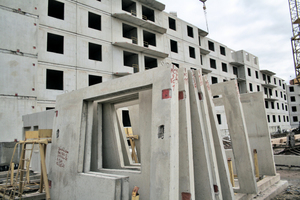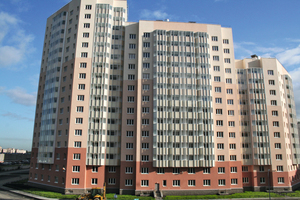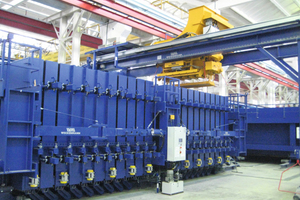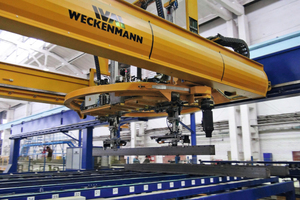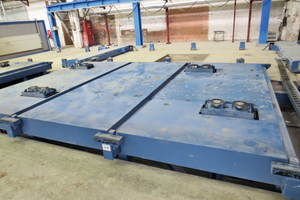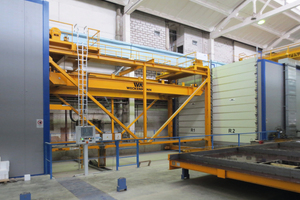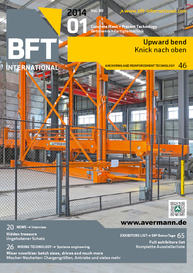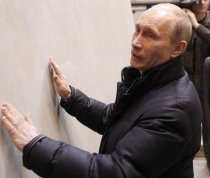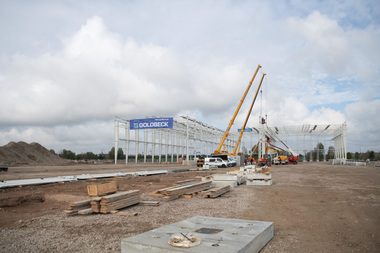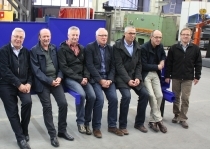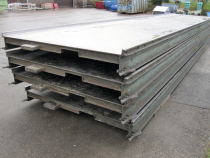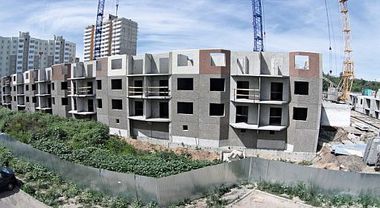Cutting-edge technology for DSK Blok in St. Petersburg
The LSR Group, established in 1993 in St. Petersburg, is one of the leading construction companies in the Russian Federation and is also market leader in the precast concrete element manufacturing industry. A few years ago, the LSR Group began with the modernization of its manufacturing plants in Moscow, St. Petersburg and Yekate-rinburg. The last project within the modernization phase was the DSK Blok precast concrete plant in St. Petersburg, whose production efficiency was optimized by means of various key performance indicators, such as energy consumption, environmental friendliness or annual output per employee.
The Blok precast concrete plant as part of the LSR Group plays the leading role in the precast concrete element manufacturing industry in the northwest of Russia. The company‘s scope of services ranges from the project design of buildings to the production of the respective precast concrete elements to fast and large-scale construction of turnkey residential buildings.
House building system
entirely of precast concrete elements
Together with the German plant and machinery supplier Weckenmann Anlagentechnik GmbH & Co. KG, DSK Blok began the modernization of the production plant in two stages in 2007, without the need of a shut-down. The company was not only aiming at a modernization of the production technologies but also the building technologies. The new house building system of DSK Blok is a building entirely constructed of precast concrete elements, which in contrast to conventional sandwich construction consists of load-bearing walls with a thermal insulation composite system. Solid floor slabs, load-bearing interior walls, elevator shaft elements, stairs, landings, balconies and attic slabs are used in addition.
The technical upgrade resulted in a considerable increase in demand as well as the volume of orders initiating the second stage of modernization in order to improve the performance. Within the second stage, the Swabian plant and machinery supplier Weckenmann delivered eight up-to-date battery molds with different dimensions and a pallet circulation system with formwork robot technology. The capacity of the plant was increased to almost 2,000 m² of wall elements and 1,000 m² of solid floor slabs per day as a result of the production expansion. Apart from an increased output, the product quality and the working conditions were improved substantially.
New battery mold generation
Blok uses the custom-made battery molds exclusively for manufacturing load-bearing exterior and interior wall elements with maximum dimensions of 7.27 m x 2.8 m. The bottom molds are height adjustable allowing the manufacturer to realize different floor levels: The buildings are offered in the so-called „economy and business class“ which only differ in ceiling height by 20 cm.
The pallet circulation system, comprising 40 formwork pallets in the dimensions of 3.9 m x 12 m, is used for manufacturing solid floor slabs having a width of up to 3,580 mm and a thickness of 160 mm. Contrary to the first circulation system installed in 2007, DSK Blok this time attached great importance to state-of-the-art formwork robot technology. The patented twin-Z technology using two synchronized vertical axes to grip the shutters directly at the integrated magnets convinced the project team of Blok owing to a cycle time operating up to 60 per cent faster than conventional robots.
The integration of state-of-the-art robot technology, among others, was possible because Blok even more relies on modern CAD software in the precast concrete element manufacturing process. At an early stage, the persons responsible were already concerned with the integration of CAD and ERP software in work process planning and production. In this process, a master computer takes over the pallet data from the CAD data using it to generate the production data required.
Innovative compaction system installed
Another innovation was successfully realized at DSK Blok for the first time - i.e. an innovative compaction system. Apart from a conventional vibration station, having the pallet oscillate in longitudinal, transverse and circular direction by low-frequency, a high-frequency vibration station was installed. The vibrators are connected to the pallet by means of high-frequency electromagnets in order to transfer the vibration energy directly to the pallet without diversion. This almost loss-free transmission of the oscillations reduces the noise pollution level by more than 10 dB, that is to say by half. The energy input is anyhow very intensive with a respectively good compaction result.
Last year, the engineers designed a synchronous control system for tilting tables and transverse lifting devices. Thus, skewed or misaligned pallets and problems with the tilting table caused by uneven loading are a thing of the past. The integration of this control system eliminated a potential point of failure of former equipment.
The heating system of the curing chamber consists of a thermal oil-fed air circulation system ensuring a constant temperature at the individual levels. The air humidity, which is necessary to avoid cracks in the concrete surface, is kept in the system. But, if it exceeded a certain level, leading to a condensation of surplus humidity in the chamber, moist air might escape effectively through the automatically activated openings at the top of the chamber and thus reducing the air humidity.
The remaining plant components come from the modular plant system of Weckenmann. The concrete spreader with porcupine roller discharge, operating across the world for decades, is reliably running in the plant as well as the pallet cleaning and oiling system, formwork transport and formwork cleaning units as well as helicopter trowelling machines.
1 million m² living floor space per year
The implementation of innovative ideas is the result of the collaboration between the two companies, among others, enabling an increase in the production output, an expansion of the product portfolio, optimization of the product quality concerning geometry and surface quality and minimization of the production and maintenance costs.
Now, DSK Blok is using 17 battery molds, providing a capacity of 20 chambers each, and two circulation systems. The overall capacity of the precast concrete plants of the holding company in Moscow, St. Petersburg and Yekaterinburg amounts to 1 million m² of living floor space per year.

